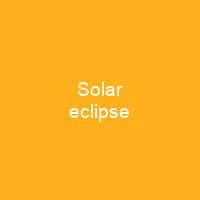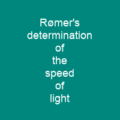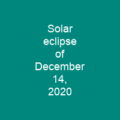What is a Solar Eclipse and Why Are They So Rare?
A solar eclipse occurs when the Moon passes between Earth and the Sun, obscuring the view of the Sun from a small part of Earth. This phenomenon, while fascinating, happens relatively rarely—only about once every 18 months on average. But why are they so infrequent? The answer lies in the complex dance of celestial bodies and their orbits.
The Moon’s Dance with Earth
Imagine the Moon as a graceful dancer, performing a delicate waltz around Earth. However, this dance is not perfectly aligned; the Moon’s orbit is tilted at about 5 degrees to Earth’s orbit. This tilt means that most of the time, when the Moon passes between the Sun and Earth, its shadow misses our planet entirely. But every now and then, a perfect alignment occurs, leading to a solar eclipse.
Types of Solar Eclipses
There are three main types of solar eclipses: total, annular, and partial. Each type offers its own unique spectacle:
- Total Eclipse: This is the most dramatic, where the Moon’s dark silhouette completely obscures the bright light of the Sun.
- Annular Eclipse: Here, the Sun and Moon are exactly in line with Earth, but the apparent size of the Moon is not large enough to fully cover the Sun, creating a ring-like appearance around the dark disk of the Moon.
- Partial Eclipse: This occurs when the Sun and Moon are not exactly aligned, resulting in only part of the Sun’s disk being obscured.
The Science Behind Eclipses
Eclipses have been observed by ancient cultures for thousands of years. The first recorded solar eclipse dates back to around 1375 BC, and it’s fascinating how these early observations helped shape our understanding of the cosmos.
Eye Safety During an Eclipse
Looking directly at the Sun during an eclipse can lead to permanent eye damage. It’s crucial to use special eye protection or indirect viewing techniques. Homemade filters and sunglasses are not safe, so always opt for certified solar viewing glasses.
The Saros Cycle: Predicting Eclipses
Understanding the Saros cycle is key to predicting eclipses. This 18-year pattern allows astronomers to anticipate when similar eclipses will occur. The next total eclipse exceeding seven minutes in duration is predicted for June 2150, stretching the excitement of umbraphiles even further.
Historical Significance
Eclipses have played a significant role in history and culture. From ancient China to biblical times, these celestial events have been recorded and often interpreted as omens or signs from the heavens. The exact eclipse involved remains uncertain, but it’s fascinating how they’ve influenced human understanding of the world.
Observing Eclipses
For those eager to witness an eclipse firsthand, there are dedicated groups known as umbraphiles who travel for these rare events. Photography requires specialized equipment and techniques, but capturing a moment like this can be incredibly rewarding.
The Future of Eclipses
As the Moon moves away from Earth over time, total solar eclipses will eventually cease to occur. The Sun’s appearance in size will also change over millennia, making future eclipses even more unique and rare. But for now, we can marvel at these celestial phenomena that have captivated humanity for centuries.

So, the next time you hear about an upcoming solar eclipse, take a moment to appreciate its rarity and significance. These events are not just astronomical phenomena; they’re windows into our shared history and the mysteries of the universe.
You want to know more about Solar eclipse?
This page is based on the article Solar eclipse published in Wikipedia (retrieved on December 13, 2024) and was automatically summarized using artificial intelligence.







